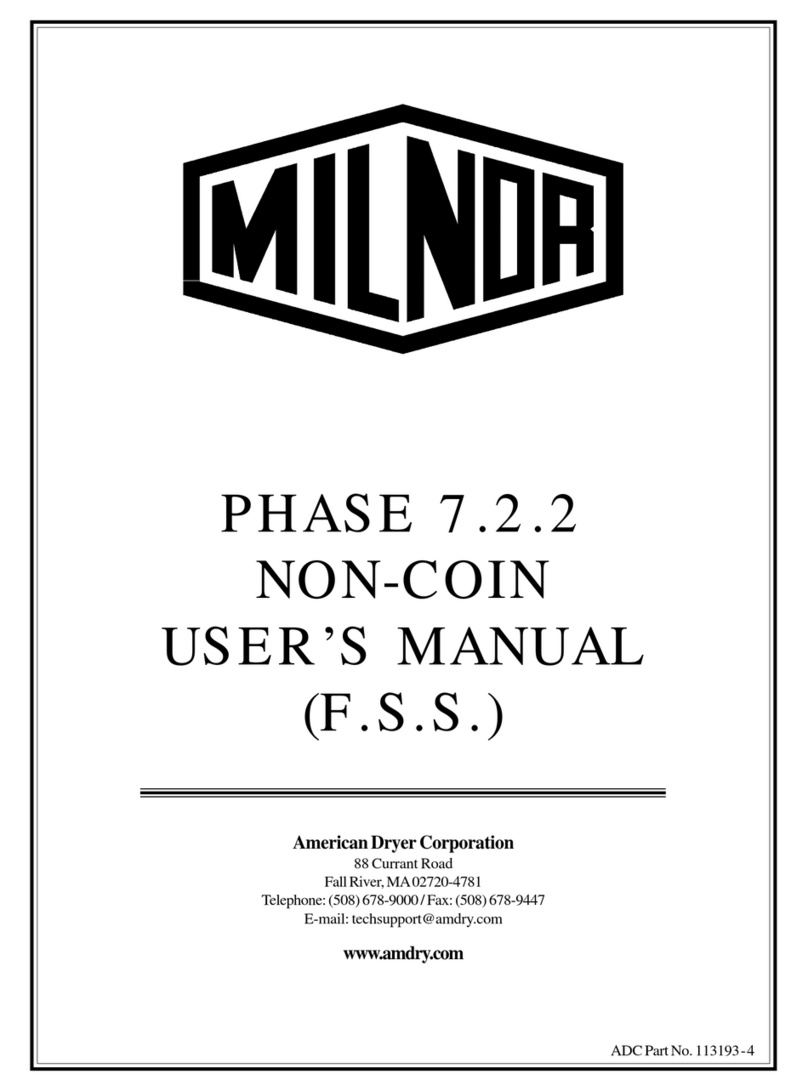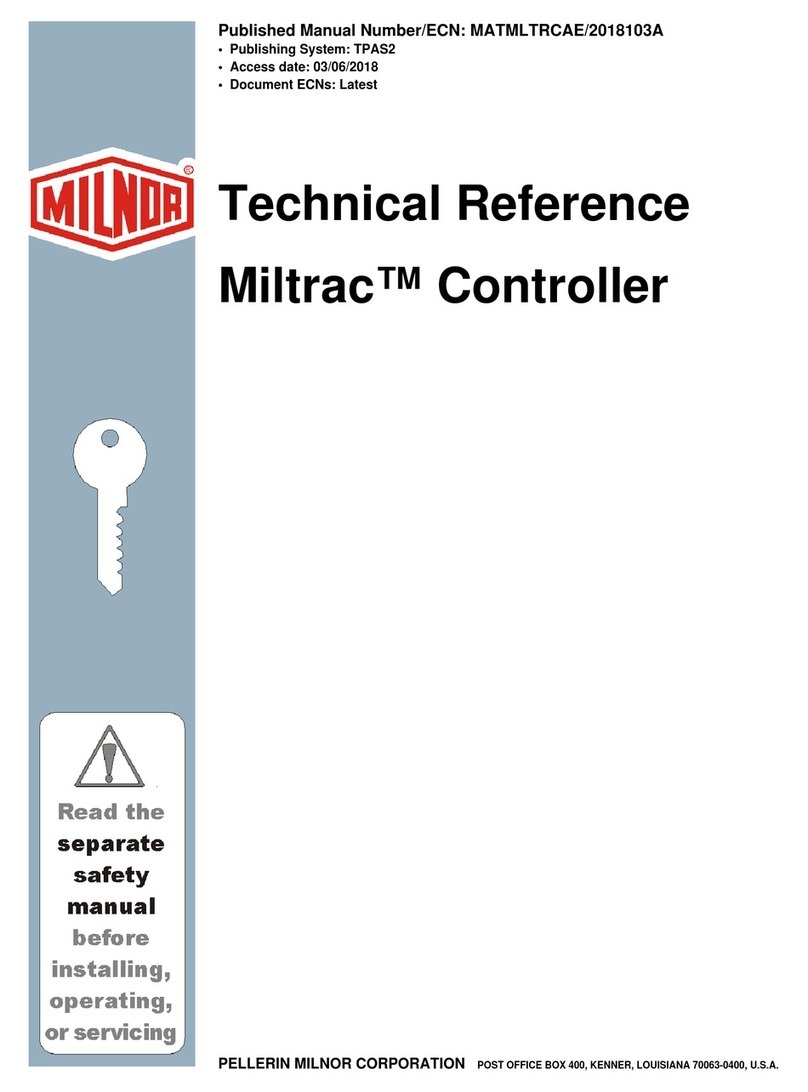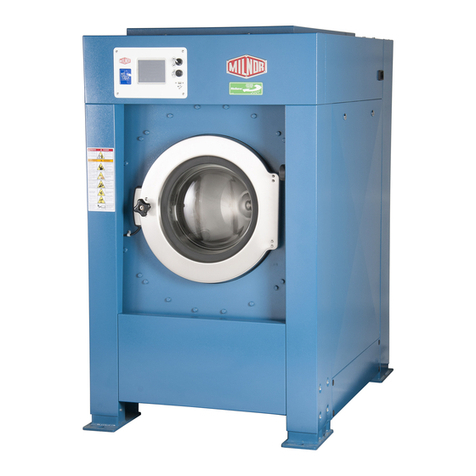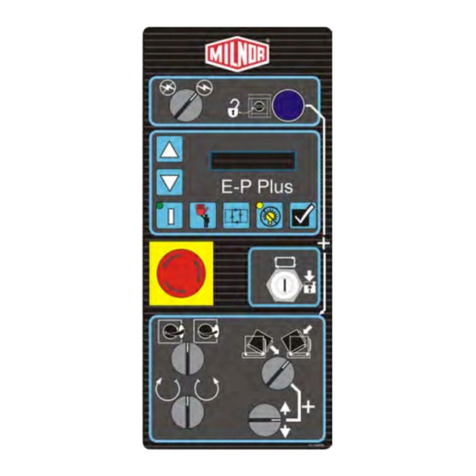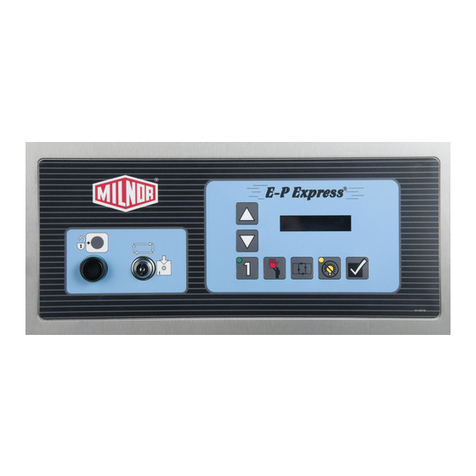
Preface
PELLERIN MILNOR CORPORATION
iii. 1. The Danger of Child Entrapment and Scalding
There have been child entrapment incidents with machines from various manufacturers. In
each instance, a small child was placed, climbed, or was helped to climb into a front loaded
coin machine and the door was closed behind him. The door locked, the machine started
running, and in one instance, the child was scalded to death.
WARNING 9 : Entrapment/Scald Hazards—
• Never let a child climb into, operate, or play around this machine. Soon after door is
closed, door may lock and basket may fill with very hot water or spin.
• Do not open door if water is in machine.
Milnor®C4E and CGE coin operated washer-extractors have a door interlock which, to protect
against entrapment, permits opening the door during the first 60 seconds after closing the door
and starting the wash program. As additional protection against entrapment, once the door
locks, it may be unlocked by removing power at the wall-mounted disconnect switch or
circuit breaker, which must be part of the installation. The owner/manager must determine,
based on laundry operation, how to best address such an entrapment emergency. For example, the
owner/manager may wish to post clearly visible signs alerting customers to this, or, if an
attendant is always on duty, to make the attendant responsible for responding to such an
emergency.
iii. 2. The Danger of Amputation Related to a Rotating Cylinder
A tremendous amount of energy exists in the rotating cylinder of any washer-extractor,
even at slow speeds. If someone tries to pull goods from a turning basket, the goods can
wrap around his/her arm, entangling the arm and twisting it off.
WARNING 10 : Amputation Hazard—Turning basket can twist off arms.
• Never reach into or pull clothes from a turning basket.
• Machine pauses between reversals. Do not reach into basket until it remains stopped and
“U” flashes on display.
To protect against child entrapment, the controller used on coin machine models in the Milnor®
C4E and CGE lines permit opening the door during the first 60 seconds after closing the door and
starting a wash program. The door locks after 60 seconds (see Note 1).
Note 1: During the first 60 seconds of the cycle, the door may be opened. If this occurs, the wash program
halts, the drain valve opens immediately, the motor stops driving the basket, and—if the machine still has
electric power—a brake is immediately applied to the basket. If the machine did not lose power, closing the
door will cause the wash program to resume where it was interrupted and the door lock delay time to be
reset so that the door can again be opened for 60 seconds from when the door was subsequently closed.
Once the door locks, it remains locked, until one of the two following conditions occurs:
• When the wash cycle runs to completion without interruption, the door unlocks after the cycle
ends and the safety delay time expires. The safety delay allows time for the machine to coast
to a complete stop before allowing the user to open the door and retrieve the goods inside.
• If power is lost during the wash cycle, the door unlocks to allow the user to open the door and
retrieve the goods (see Note 2).
Note 2: In C4E and CGE models, a wash program interrupted by a power loss cannot be restarted. When
power is restored and the door is closed, the customer can start the wash cycle from the beginning by
inserting more coins, or the attendant can turn the Attendant switch to the horizontal position to allow
starting the machine without coins.
